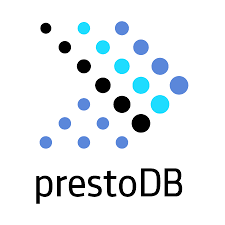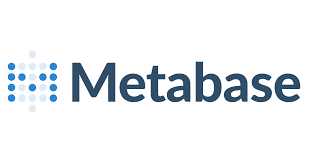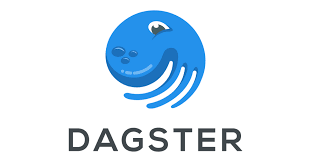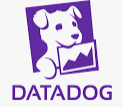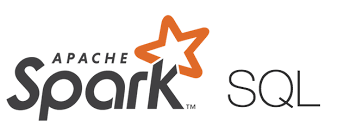Data Engineering is technically Software Engineering where the core focus is around Data!
There are many data engineering stories or workflows 😅
In this blog, I've tried to draft a classic journey of Data Engineer which is really not only about
data engineering but
💯 Team
🙋♀️ Data Analysts & Data Scientists
👻 Finding Right Technologies
❤️ Restart !
And the Data arrives. Well we have no idea, what is that data all about but the rumour is, around ~ 20 GB.
Well its gonna be structured (or not), so it gonna be really easy to estimate, isn't it 😌
😈 #data_is_a_myth
We all connected [Virtual], and all of us were pretty much convinced on easy sql engine, maybe postgres and then we can simply run some basic query for data analysis.
Yeah we already decided!
Finally the data was accessible & we decided to look into the data, it was CSV, yeah 20 GB of CSV ( gzipped) 🥵 !
Nothing is easy !
A huge file of csv 📁, unzipped and we have now many things to consider
* Is it really gonna be the only file ?
* Is the data actually clean ??
* Is postgres really a smart choice ?
* As we already know about bigdata & data engineering, why not building it already ?
* Are we really gonna need all the 300+ columns in the data
* ...
So the best choice was to really focus on data exploration!
Data Exploration (here) is really not about loading the data, but more about knowing the Data!
To know more about data in distributed fashion, we have the default choice - 📢 Apache Spark
No, there was not much of a debate at this moment
1. Store the data on any distributed file system, lets consider here S3.
2. Load data in Apache Spark
3. Run analysis, peace of cake
NO, how can it be so easy ?
📛 Well its a single file, larger than 20 GB & Spark Driver is showing Attitude.
📛 Spark write is behaving way more crazier, JVM Heap!
📛 Ask for any group query, shuffling is hitting JVM hard
#:broken_heart:jvm
We need a way to make this process scalable!
We decided to split the data into multiple partitions of some reasonable size. Considering Spark, we fixed the range between 150 ~ 250 MB.
Do we really wanna continue using CSV ?
No, we need a more optimized columnar data format, so Parquet was an obvious choice for us.
Apache Parquet is a columnar storage format available to any project in the Hadoop ecosystem, regardless of the choice of data processing framework, data model or programming language.
1. Load the data in Spark
2. Write the data back to S3 within partition range as Parquet Data Format.
We heard data is ready, can we explore the data! Suddenly Data Analysts & Data Scientists jumped into the discussion.
Well get ready!!! 🏃♂️🚨💥
So convincing Data Analysts & Data Scientists to explore the data over commandline! is <>
Well we can provide Jupyter Notebook but still not the best solution (programming interface is not for everyone).
So, we really need to provide an interface to work...
Data exploration Platform should atleast have the following -
1. Open Sourced
2. Support Large Scale Data Exploration
3. Fancy Graphs
4. Dashboarding
5. Sharing
6. Governance
7. Multi Data Source Connectivity
8. Easy to use
So technically, we are expecting everything for a large scale project. Well after many hours of discussions -
PRESTO, an open source distributed SQL query engine
METABASE, open source way for everyone in your company to ask questions and learn from data.
But for now we provided an amazing interface which can be used by our Analysts & Scientists to explore the data and discover insights.
Hurray, we can now make Data Driven Decisions. Really, Can we 😰 ?
Well we were hoping to enjoy the moment but suddenly we got hit 💣 by data, lots and lots of data.
The problem now shifted from Data to Big Data
So what, we have a Spark cluster and parquet based partitioned data, so we can transform all new data to the similar format 😎.
Easy guys, well there are some problems we never addressed when we started -
1. With so much data, Queries are way too slow
2. This new data is burning too much resources in Infrastructure
3. Even its structered data, its has too many Nulls, weird characters and what not & we never did any preprocessing
4. Too much data to explore
We realized we never optimized the job for faster query, but just to add partitions (random).
There was not even a discussion on data cleaning as we were not aware what to expect.
Data to Big Data was sudden & our pipeline was not designed to support that.
This is where actual engineering begins. We sat with Data Analysts & Data Scientists to plan
1. We are receiving data every data, so we need to run a batch job every day
2. There are more than 300 + columns in the data, but there are some specific point of interests for now
3. Create Data Partitions based on identifiers ( Date, Id, POIs) etc.
4. Data has too many gaps and have many duplicates, add spark transformations for clean data
5. Data Scientists are interested on more deeper level on the data, so schedule another job
on top of first level of processing.
6. Data Analysts may want to run some crazy query, so what about manually trigger batch jobs.
7. There are some queries which are too common, why not keeping that inside data pipeline! :imp:
8. What about feature engineering :worried:
Well entire team understands python, but Spark is still not great with Python. What if in future we need to connect to Kafka, well Python... Naaah! So why not data pipeline on Scala & Data Science related logic on Python. Yeah, its 2 languages, but we can work with it.
Bringing 1+ programming languages are considered complex to manage but sometimes its more about technology rather than simplicity. Scala is always better for JVM compared to python but Machine Learning
We have now many jobs, running on different point in time and we are now talking about scheduler. Yeah not a cron job for sure, so we need a platform to programmatically author, schedule and monitor workflows.
Again The Debate
This should never end, as now open source community is brining too many options and every options has its own factor, but considering other group and previous experince, we concluded on Apache Airflow. ( #fornow )
So now we have airflow to schedule all the jobs. There is a manual trigger via interface. Metabase to explore data and run faster query. And Spark pipeline to clean and build features. We are done .. yeah 🤠
No, That is No! Where is Monitoring. Really
1. Job failed after office hours
2. Everybody hates pagerduty
3. What failed and how to debug
4. There is sudden spike in resource utilization, why ?
5. Why suddenly this job is slow ?
6. Nobody has any idea what am I running in cluster, nothing to worry :astonished: ?
This is really not the end, but the beginning. Technically we just launched the Project and now more people gonna use it and more requirements gonna pop-up. Next discussions will be around Data Warehousing, Data Analytics and Large scale Machine Learning Platform and what not!
So we just opened the pandoras box and things gonnna be more exciting, more debate and more technologies 😆
There are still discussions on why not using apache superset or some other distributed sql engine & I am sure its never gonna end. There are really so many convincing points of using other technologies but some notable points, we considered for selecting any technology
1. Active Community
2. Features
3. Future issues & Upcoming release plans
4. Frequency of releases
5. Q&A availablility



